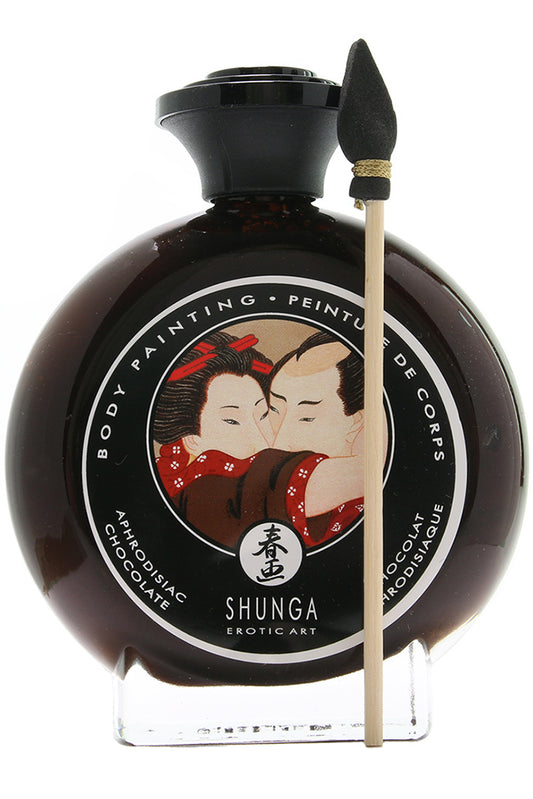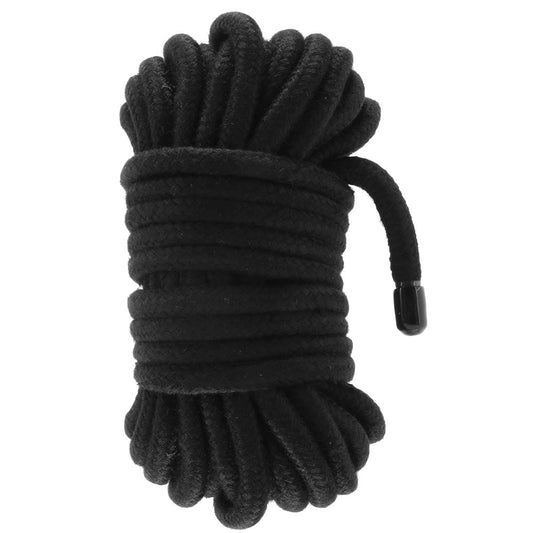
If you’ve ever been interested in BDSM, you’re far from alone. In fact, One study published in the Journal of Sexual Medicine revealed that nearly half of the general population has experimented with some form of it (BDSM meaning Bondage & Discipline, Dominance & Submission, Sadism & Masochism).
Shibari falls under this very sexy umbrella. Have you never heard of the term Shibari? If you’re ready to get a little kinky with bondage rope play and also engage in what is, in essence, a beautiful art form in Japanese style, look no further. We’re about to blow your mind.
What is Shibari?
According to Mashable’s investigative journalist Beth Ashley, “Shibari, sometimes called Japanese rope bondage or ‘kinbaku,’ is a modern form of rope bondage originating in Japan. ‘Shibari’ means ‘tying’ and ‘kinbaku’ means ‘tight binding.’ The two are used interchangeably, and refer to the same type of play.”
She goes on to clarify, “Put simply, Shibari involves tying someone up with ropes. Sometimes this involves sex, with couples tying each other into certain positions and sometimes the fun is just about the tying itself. But historically, it’s been used as a form of meditation, relaxation, and trust-building practice between two people.”
Yes, you read that right -- Shibari is about much more than just ropes and games. Shibari experts and those who practice it routinely note that it can take you to a deep place and be meditative, spiritually restorative, and rejuvenating. How the way knots generate geometric patterns on someone’s body alone can be mesmerizing.
It can also be super hot.
What are the origins of Shibari?
In the Japanese language, Shibari means “to tie” or “to bind,” and it’s fascinating to reveal how it got started. According to sexologist Midori, author of Seductive Art of Japanese Bondage, what is now a form of erotic bondage actually stems from the martial art of restraining criminals and prisoners (the way they were bound) in ancient Japan -- specifically during the Edo period of the 1200s CE to late 1800 CE.
Journalist Clarissa Sebag-Montefiore adds that “Shibari originated from Hojo-jutsu, a method of restraining captives and a form of torture, before morphing again into the erotic bondage Kinbaku (the Japenese word Kinbaku-bi translates as ‘the beauty of tight binding’) in the late 19th and early 20th centuries.”
“This [way of binding] fed the darker erotic imagination of kinky Japanese people,” Midori says, “much in the same way that European medieval prison tools inspired Western bondage BDSM—think crosses, manacles, and chastity devices.” These kinds of bindings also wound up featured in unique types of porn and sex clubs of the age.
Now fast forward to WWII, when American military members saw Shibari while stationed in Japan. They were so intrigued and inspired by it that they stealthily brought it back to the US. And, of course, in the 1990s and 2000s, when everything else ended up online, so did Shibari. Now rope artists all over the world are familiar with the practice, and the ways it can build intimacy and connection.
Why do people do Shibari?
First off, it’s helpful to highlight the fact that there are two roles in Shibari: the rigger (the one doing the tying), and the rope bottom/rope bunny (the person being tied). And there are different reasons people love to engage in each of these roles.
Being a rigger offers an element of control, creativity, and connection -- with the person being tied up and the rope itself. And the relationship between the rigger and rope bottom can be profound; many describe the connection between the two as occurring in the rope itself. For example, according to Singaporean Shibari artist Daniel Kok, “[Shibari] can be very gentle, as well as really hard. There is a whole range of emotions that are as flexible as the material itself … a sense of communication through rope.”
And being a rope bottom can be a deeply relaxing experience. It’s important to note that a Shibari experience doesn’t necessarily have to be sexual. For many rope bottoms, the feeling of being tied up is associated with safety, comfort, and relaxation. There's a way that being completely “helpless” -- meaning you’re unable to move not able to move yourself -- feels like a relief. There are no decisions to be made or choices to be had. There’s just you, the rope, the bindings, and the moment.
As one rope bottom puts it, “When I’m in ropes I go someplace else, where it is dark and comfy. It is calm and dreamy, and the only feelings left are my bodily sensations and my emotions. The waist rope is getting tight and affecting my breathing. The tension on my chest from the box tie (a type of chest tie) is making me feel grounded, but also trapped. The pain in my right shoulder, which is always there, no matter what I do. I just learned to tune it down. The sensation that I can’t possibly take any more of this, the inner fight and struggle. The intention to endure, while realizing this is not the best possible intention. Then the letting go. The relaxation of the muscles, and the cold sweat. The release. The sweetness of giving up and accepting the vulnerability of your body. And the deep appreciation that giving up (in this case) is a virtue.”
There’s also a strong artistic element to the practice. Hajime Kinoko, for example, is a Shibari artist who performs regularly: “Kinoko performs live rope shows, releasing artwork, and photographs and videos. In them, he is in charge of tying, photographing, and directing. He describes Shibari as a connection. When he ties someone, he most cherishes this connection with the model. Besides, he feels as if he was tying himself with the model, which implies a strong feeling and recognition of the model. After this bonding, the result is that he ties the model according to her desires.”
While the Japanese word Shibari refers to the actual act of tying, the practice is about much more than that. Many practitioners and those who engage in it describe a transcendental experience, especially when suspension is involved (you can do Shibari on the floor or in a space where you can actually hang from the ceiling).
In the words of one model on what they love about it, “The endorphin + dopamine rush. The difficulty to communicate and to break the glass, separating me from the real world. I can still vocalize simple sensations, concerning safety, but everything else is non-important. I disappear in this space, all I am are my sensations and all I am are my emotions, completely lacking any type of thought — just colorful clouds of dust. And I feel the body of my partner close to mine, tying knots, touching me, spanking lightly, and scratching my skin. I hear their voice, somewhat in slow motion, which is my only bridge to reality. Otherwise, I’m utterly lost in this dark, comfy place with colorful clouds all over.”
How to safely do Shibari with your partner
Shibari is a lot more than simple knots, and while it’s super appealing, it’s also edgy. You can hurt someone doing it, especially if you use the wrong rope material (you should use shibari ropes that are specifically made for this … you don’t just want to go to Home Depot and grab just any rope). There are intricate knots involved, and this means there are risks.
Or as rope expert Vanina says, "Even though it may look very visually pleasing, and somewhat connected to dance/yoga, it is important to state that shibari is a part of BDSM, and is considered edge play. It can be dangerous and can lead to various accidents and injuries, the most common one being nerve injury. Therefore, if you are curious and decide to try any form of shibari — please consider going to actual classes, or at least an intro course that will give you a basic idea of anatomy and the main risks associated with bondage."
As stated, one great way to learn how to engage in Shibari safely is to take classes. For example, if you want to honor Japanese culture and learn the craft from Japanese practitioners, you can look into Osada Steve’s Shibari Dojo. Osada Steve is a Japanese person trained by Osada Eikichi, who was one of the original Japanese masters of the craft to engage in the performance of Shibari. Osada Steve’s work is also influenced by the great Yukimura Haruki, known as a “grand-master of floor-work.”
In-person venues such as Anatomie Studio in London also offer instruction in Shibari for beginners and more advanced practitioners. And online schools like Shibari Study offer streaming courses, meaning you can learn it all right from the comfort of your living room. Regardless of where you go, the important thing is that you’re open to learning and improving over time.
Finally, it’s good to restate that to do Shibari safely, you need to use the right gear and adult sex toys. For example, cotton rope is not recommended if you’re playing with suspension. Instead, a lot of Shibari experts recommend hemp or jute rope. Ropes made of natural fibers like hemp and jute have three advantages:
1) They’re soft, as compared to other fibers.
2) They’ve got “tooth,” meaning they can hold knots well.
3) They don’t stretch under tension, which is something cotton rope does.
Note: Natural fiber ropes also reduce the risk of rope burn, which can ruin a Shibari session quickly.
The beauty of a practice like Shibari is its versatility. You can practice it for its erotic nature, yes, and it can also be a gateway into higher states of consciousness. It can build intimacy with a partner, help you learn an intricate new skill, and generate more beauty in the world. Just remember to do BDSM aftercare and check in with your partner to align on what can be better for the next experience.







